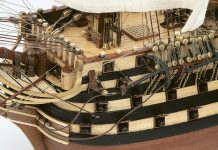Douglas DC-3: 80 Years of Aviation Greatness
For the average human, eighty years of working warrants a well-earned retirement. But for the Douglas DC-3, there seems no end to its international service, with 80 years of flight and counting.
So how is it that this iconic airplane has sustained such high levels for so long, and just what makes it the icon it is today? Read on to uncover some of the DC-3’s career highlights and see why we love this long-serving beauty.
The plane that was revealed on December 14, 1935 was almost a completely different aircraft
American Airlines Requirement: Upgrading the DC-2
With competitors drawing millions of dollars away by developing more innovative and comfortable planes, American Airlines found themselves fighting to keep up in the early 1930s. Their DC-2 was a step up from their fleet of Curtiss Condor biplanes, Ford Tri-Motors and Fokker Tri-Motors, but it still had significant shortcomings – namely its size, power, landing difficulty, directional instability, troubles managing turbulence, and an inability to make a non-stop flight from New York to Chicago.
While a mere upgrade on the DC-2’s design was expected, the plane that was revealed on December 14, 1935 was almost a completely different aircraft – boasting a greater wingspan, increased tail area, a more robust landing gear, and significantly greater power, with additional focus on passenger comfort.
The Significance of the 17th December
On December 17, 1903, Orville and Wilber Wright, aka the Wright Brothers, made one of the greatest advancements in aviation history – becoming the first people to successfully demonstrate sustained flight by flying their glider – the “Wright Flier I” at Kitty Hawk, North Carolina.
Flash forward 32 years to Santa Monica, California, and another significant step in aviation was about to unfold, with equally little public or press fanfare. Without a photographer to document this momentous occasion, the Douglas DC-3 – known then as the Douglas Sleeper Transport – took to the sun-kissed blue skies with the roar of its twin propellers and a wisp of faint smoke, transforming the lives of millions of travellers for decades to come.
Comfort: A Key to the DC-3’s Success
Taking a ride in an airliner was once akin to riding an old wooden stagecoach –bumpy, loud, and leaving you a little worse for wear. But with the introduction of the following comfort improvements, the Douglas DC-3 transformed air travel for future generations.
The Douglas DC-3 had a range of soundproofing measures in place
- A larger aircraft – much like a cruise ship cuts through sizeable waves, the DC-3’s increased size improved stability and made for a smoother trip.
- Increased flight height – while providing greater stability through the avoidance of turbulence, the DC-3’s ability to fly higher than other aircraft meant a drop in cabin temperature – a godsend during the Summer months in a time when air-conditioning was not yet available.
- Improved ventilation – drawing air from inlets ahead of engine exhausts, fresh air was blown freely throughout the cabin, negating the need to open cabin windows and the consequential exhaust fumes, wind blasts, and excessive engine noise.
- Minimised in-flight-noise – the Douglas DC-3 had a range of soundproofing measures in place, namely padded walls, seating upholstery, shock mounts within the body of the plane, carpet, and rubber vibration dampers.
The Douglas C-47 Skytrain aka “Gooney Bird”
The C-47 Skytrain’s military application has been proven time and again across numerous wartime services
34th U.S. President Eisenhower has been credited as naming the Douglas C-47 Skytrain, a military version of the DC-3, one of the four most important weapons used to win the Second World War. It’s easy to see why. Fitted with reinforced flooring and a modified cargo door, although no armament, the C-47 Skytrain played a role in every major battle of World War II, including the D-Day battle of Normandy, Belgium’s Siege of Bastogne, and Operation Plunder in Germany.
The C-47 Skytrain’s military application has been proven time and again across numerous wartime services, including the Korean and Vietnam wars, and it remains in active military service to this day.
Recognised worldwide for its durability, reliability and longevity, the Douglas DC-3 and its variations continue to paint a remarkable picture of American aviation achievement. With the support and care of keen engineers, there is no telling how long this beautiful aircraft will grace the skies – another eighty years doesn’t seem farfetched!
Sources:
http://www.dc3history.org/aa_master.htm
http://home.iwichita.com/rh1/hold/av/avhist/a8/a8_dc3.htm
http://worldwar2headquarters.com/HTML/aircraft/americanAircraft/skytrain.html






